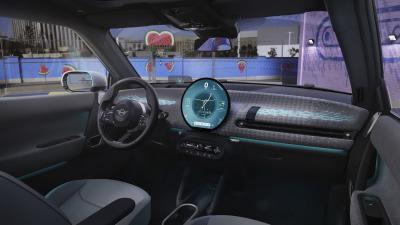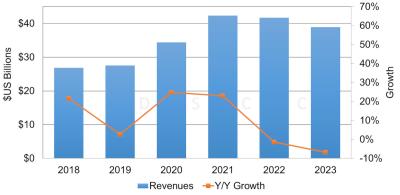OLED is a light-emitting technology used to create thin, efficient and flexible displays and lighting panels. OLEDs are useful in many applications, such as TVs, smartphones, wearables, laptops - and also automotive displays and lighting solutions.
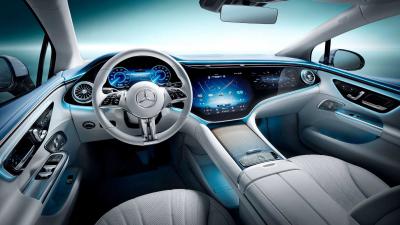
Where can you OLEDs in cars?
There are several possible (and existing!) applications for OLED displays and lighting systems in cars:
- Dashboard displays (instrument clusters, navigation, media, HVAC...)
- Heads up displays
- Internal lighting
- External lighting (tail lights, turn indicators)
- Digital rear-view internal mirrors
- And more application we cannot think about today!
OLED displays for cars today
Several car models already use OLED displays today. Simple PMOLED displays have been adopted by automotive makers for many years, for example the Lexus 2010 RX for example has a white OLED display, supplementing the main 8" display.
Starting in 2021, automotive makers started to also adopt AMOLED displays in premium cars. The 2021 Mercedes S-Class for example comes standard with a 12.8-inch OLED, and the 2021 Cadillac Escalade sports a large 38-inch LGD P-OLED display (made from several displays).
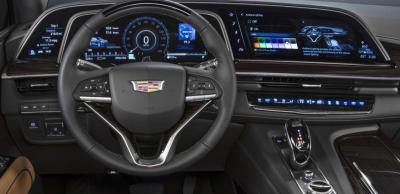
We expect this trend to continue, as OLED makers such as LGD, SDC, BOE and others accelerate automotive AMOLED development.
OLED lighting in cars
The automotive market is one of the most interesting markets for OLED lighting, and many believe this will be one of the first markets to adopt the next generation lighting technology. In 2016 Audi unveiled the 2016 TT RS, which sports optional OLED taillights - the first commercial car to sport the new lighting technology. Since then several models from Audi, BMW, Hongqi, Mercedes and others have adopted OLED lighting panels.
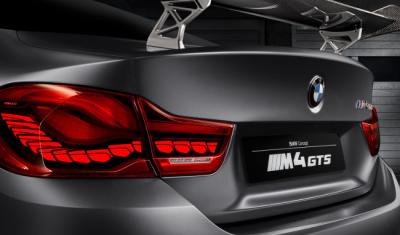
OLED-Info's Automotive OLEDs Market Report
 If you're interested in this market, check out our market report on Automotive OLEDs. The report discusses the current OLED display and lighting automotive markets, with a complete list of OLED display and lighting makers that are involved with the automotive market, with personal contact details. Our market report is updated quarterly.
If you're interested in this market, check out our market report on Automotive OLEDs. The report discusses the current OLED display and lighting automotive markets, with a complete list of OLED display and lighting makers that are involved with the automotive market, with personal contact details. Our market report is updated quarterly.
The OLED Automotive Market Report explains:
- What kind of OLED displays are currently adopted in cars
- Why OLED lighting is exciting for car makers
- The future of Automotive OLED display
- OLED concepts and forecasts by BMW, Audi and others
The latest automotive OLED news:
LG Display demonstrated its 30" and 77" transparent OLED displays for the first time
LG Display is demonstrating its new 30" and 77" transparent OLED displays for the first time, at the company's booth at K-Display 2023, in Seoul, Korea.
Credit: LG Display
The new 30" transparent OLED offers HD resolution, while the 77" panel offers 4K resolution. All of LG's latest transparent OLED displays offer 45% transparency. LG showed its entire range of T-OLED displays in a coffee shop setting, in partnership with Starbucks.
Audi unveils its second-gen OLED lighting taillights, to be adopted in the 2024 Q6 e-tron
Audi unveiled the upcoming 2024 Audi Q6 e-tron, with its second-gen OLED taillight technology. The new taillight lighting system use a total of 360 individual OLED panels built into 6 different lighting panels (each made from 60 OLED panels, or segments as Audi calls them), and is able to show warnings and signals to other drivers. The OLEDs are likely produced by OLEDWorks, like all of Audi's recent OLED panels.
Audi will ship the cars with 8 pre-configured digital light signatures, and customers will be able to add their personal light signatures using the myAudi app.
The Mini Cooper 2025 to sport a round 9.4-inch AMOLED display produced by Samsung
MIni Cooper unveiled the interior design of its upcoming 2025 model, with a large round OLED display (this same display was shown a year ago in a Mini concept car design).
The display is 9.4" in size, and is produced by Samsung Display. Mini Cooper developed its own unique software, called Mini Operating System 9, complete with several experience modes that control the complete interface and Mini's new personal assistant dog called Spike.
Omdia: the automotive OLED market is set to grow to $2.17 billion in revenues by 2027
According to market research firm Omdia, the OLED automotive displays market is set to grow to $2.17 billion in 2027, up from $481.75 in 2023 (that's a 4.5X growth in sales). In terms of shipments, the market will reach 9 million units in 2027, up from 1.48 million in 2023 (a 7X growth).
Omdia is actually more optimistic about the automotive market than it was last year, as the industry is growing faster than expected. There is a rapid uptake of AMOLED displays in premium cars, as the displays offer a better image quality, lower power consumption and lower weight compared to LCDs, which is all very important for electric cars.
Business Korea: the upcoming Genesis GV80 will use a 27-inch AMOLED display produced by LG Display
According to a new report from Business Korea, the upcoming new version of the GV80 Hyundai Motor's Genesis car will adopt a large OLED display, the first car by Hyundai to use an OLED as the main display. The GV80 will use a 27" P-OLED display produced by LG Display, that will be used to connect the instrument cluster and the navigation and audio-system center console The GV80 will be introduced before the end of 2023.
LG Display was one of the first companies to identify the automotive industry as a potential market for its AMOLED displays. LGD is already supplying OLED panels to several companies including Mercedes and Cadillac. In 2021 it was estimated that LGD holds a market share of over 90% in automotive AMOLEDs, and the company is now considering building a dedicated AMOLED production line for automotive displays.
The MicroLED Industry Association to host an automotive microLED display webinar
On September 4th the MicroLED Industry Association will host a private webinar on automotive displays and technologies. The automotive market represents a very good segment for display developers, as it offers high performance requirements and the ability to adopt premium solutions. Many analysts believe that this market will be one of the first ones to adopt microLED technologies (together with the AR/VR and wearables markets).

During the webinar, we will look at current solutions and future roadmaps, learn how the automotive industry looks at display solutions and next-generation technologies and see how microLEDs could find a market in the automotive industry.
The upcoming Seminar will feature three world-leading speakers, and will also be open to a Q&A session, to help increase microLED developers knowledge and involvement in the automotive industry:
AUO may close down its AFPD OLED fab in Singapore as it focuses on microLED for next-gen wearable and automotive displays
AU Optronics has a 4.5-Gen AMOLED production line in Singapore, active since around 2013. The AFPD line is a small-scale operation, and AUO never managed to expand its capacity and compete with large AMOLED producers.
According to a report from Japan, AUO is now considering closing down the AFPD line, and converting it to microLED R&D production line. It could move it back to Taiwan, or retain Singapore as a hub for AUO in Southeast Asia. The company will make a final decision, it seems, in early 2024.
DSCC: OLED panel revenues to decline in 2023, in a second consecutive year
DSCC says that OLED panel revenues will decline 7% in 2023 (to $38.9 billion), the second consecutive year that the OLED market is seeing a decline in sales. The largest declines will be in the OLED TVs and laptops segments.
The OLED smartphone market will actually grow 4% in unit sales, but revenues will decline 5%. The OLED TV market will decline 29% in 2023 in both revenues and units. OLED laptop unit sales will decline by 15%. All other segments, including AR/VR, automotive and tablets, will grow in sales and revenues in 2023.
Genesis to use Samsung's 25" AMOLED displays in its next-gen automobiles
According to reports from Korea, Hyundai Motor decided to adopt Samsung Display's 25" AMOLED displays in its next-generation Genesis car, a horizontal dashboard display.
Samsung already supplies AMOLED displays for Hyundai's Ioniq 5 (digital side mirrors), but this is the company's first design win for Genesis.
Visionox shows its latest OLED prototypes and technologies at Display Week 2023
China-based Visionox demonstrated many OLED displays and new technologies at Display Week 2023.
So first up, we have some rollable and foldable OLEDs. You can see some impressive looking such flexible OLEDs in the video above, and Visionox featured many such displays at their booth.
Pagination
- Previous page
- Page 3
- Next page



